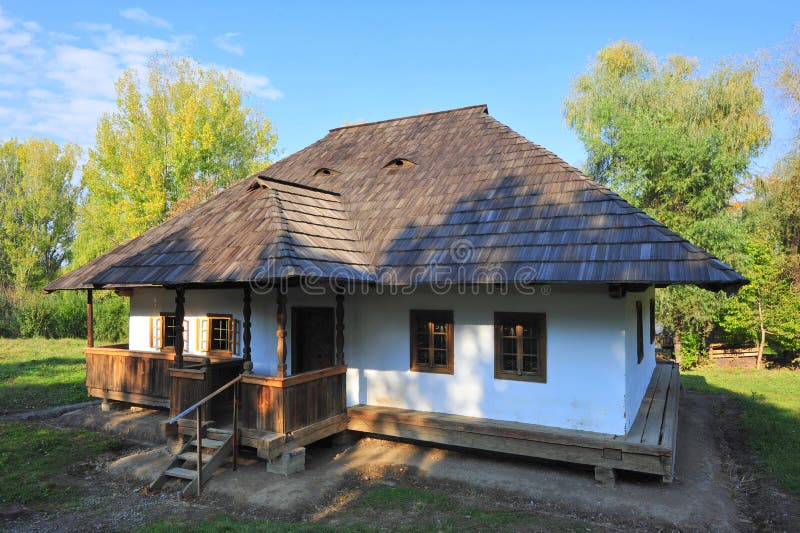-
Posts
11 -
Joined
-
Last visited
Content Type
Profiles
Forums
Classifieds
Tip Site Directory
Blogs
Articles
News
Arborist Reviews
Arbtalk Knot Guide
Gallery
Store
Calendar
Freelancers directory
Posts posted by Smilegr8
-
-
3 minutes ago, agg221 said:
No, you won't have to treat them. It sounds like your climate goes from hot and dry to cold and snowy, rather than permanently damp like the UK. Even here they will last a good 30-50yrs on an ordinary pitch roof, so given that in your location they should last better, I would think you will only do it once in your lifetime. There are many good videos on Youtube showing shingle making but as a starter, this one is pretty useful.
https://www.youtube.com/watch?v=UZA1J8RHltY
I haven't made shingles, but have split a reasonable amount of lath for my ceilings, along with all the battens for the roof. It takes a long time, but I find it relaxing - a nice job for a few hours of an evening.
Alec
True , we don't really have a damp climate here , no algae or moss on roofs
Thanks for your time guys
Hope you have a lovely day
-
 1
1
-
-
20 minutes ago, Stere said:
In Romania the old traditional building skills are reviving or shall I say it never died? While we speak nearly the same language , Moldova was part of USSR for 70 years and that drastically changed the traditions and building culture/approach . These days if you see a traditionally built house with a thatched roof or wooden shingles then is almost certainly thats a village museum or an eco-hotel .
Is not gonna be quick or easy but i will go for oak shingles to cover our farmhouse. Have a garage full of machinery and done quite a bit of woodworking in the past , from cutting and drying my own lumber to window frames etc .
One more question - will i have to treat or seal the shingles at all ? May be with a water repellant solution?
Regards
Iurie
-
10 hours ago, agg221 said:
I can answer that question, or at least one way of doing it, which is how I tiled my extension roof, which is also insulated over the rafters, then plywood, then membrane.
If you remove the asphalt, you should be able to see where the plywood is fixed down to the rafters/trusses. Mark these points top and bottom of the roof. Then apply a breathable membrane horizontally in strips, end to end. This would have been a lot easier with two people, but I did it by tacking the strip to the plywood along its top edge, where the rafters were. The strips overlapped so any water would run off. Then fix battens running top to bottom over every rafter, sandwiching the membrane, ply and rafter. Oak or sweet chestnut battens, fixed with helical stainless nails like this:
https://mammothroofing.co.uk/products/super-7-160mmthor-helical-pitched-roof-nails-box-of-100
which worked very well, but did need pilot holes in seasoned oak (no pilot hole needed if you are using softwood). My battens were not all straight but they could be pulled straight and held with the helix. It does put holes in the membrane but they are hidden under the batten so no leak path. Horizontal battens can then be fitted at the right spacing, nailing onto the vertical battens (which are called counter battens). Spacing can be rustic, using the curve of the battens, or uniform using a spacing block and bending them to shape. Bear in mind that if random you need to put the battens closer together to allow for the maximum gap, which means more shingles too. I was using outrageously expensive handmade tiles (to satisfy Listed Buildings) and that meant I wanted the fewest I could get away with, so pulled the battens straight. The shingles can then be fixed to the horizontal battens, either by hanging on pegs or using stainless annular ring shank nails (much easier). Pilot holes are needed. If you just try and nail onto the batten then it bounces too much, but sliding a block between it and the plywood stops that.
So long as the shingles are close enough together to stop direct sun getting through the membrane holds up pretty much forever.
It took me a while (I made all the batten too by cleaving sweet chestnut) but it came out nicely in the end, and it wasn't hard, just repetitive.
Alec
Alec thanks for such a detailed reply
Initially I thought to start from the lower side of the roof and bolt down 90 degree metal corner brackets then roll another asphalt felt to cover the screw / bolts and repeat that to the top of the roof then vertical battens can be fitted on the metal brackets
Since you've done it already - im gonna print your advise and keep it in the draw as sounds a very good way of doing it
Thanks again
Iurie
-
1 minute ago, agg221 said:
I wondered whether the use of wooden shingles was previously common in your area? I tried googling it, but I'm not on a winner with that one (too many language challenges!) - I found them in Romania but that was about the best I could achieve.
If so, they might meet your requirement of being in-keeping and thin. If the raw material is available (oak or sweet chestnut in suitable rounds) then it is practical to make your own, given time, as it's a very repetitive task, removing the need to find skilled craftsmen. No denying that a skilled craftsman will be faster, achieve a higher yield and they will look better, but it's possible to do an adequate job with very basic tools, some general idea of what you are doing and plenty of spare material to scrap!
Alec
Oak shingles would look fantastic I just can't imagine how to secure them on the roof without damaging the waterproof layer underneath .
Done properly a shingle roof won't need any waterproof membrane underneath but not in my case : )
I might spend this summer cutting shingles i guess
thank you
-
1 minute ago, richyrich said:
It defo won't grow from cuttings that are not pushed into soil.
unless pilled up with a combination of dust and moisture
-
15 minutes ago, agg221 said:
You mention that you are not in the UK. Whereabouts are you? I wondered what the equivalent local vernacular construction material on ancient buildings might be? Is there anything useful you can borrow from?
Alec
Our farm is located in Eastern Europe ( Moldova ) and (reed) thatched roofs was something very common half a century ago however these days you would rarely see any and chances to find a local (skilled) company / people to thatch a roof is next to nothing or at least is not an easy task
-
2 minutes ago, dumper said:
How are you going to stop it growing ?
if seasoned then won't be an issue ?
-
4 minutes ago, agg221 said:
I think the fundamental problem may be that it isn't possible to fake the look of thatch without actually thatching.
Alec
Totally agree .. I thought it was a foolish idea but needed somebody to confirm that : )
the water will definitely run thro - as the layer will be too thin ..
I will look for an alternative then
-
Quote38 minutes ago, richyrich said:
Willow cuttings - once dried out they are not very durable. They won't last that long- 2 or 3 years guesstimate. Will just decay. Have you thought of using Common Reed..?
I will definitely consider Common Reed just need to find where to source it from and the cost . Willow came first in mind as we have 5 acres of it ready to be coppiced
 and we try to use local / green materials
and we try to use local / green materials
Thanks for your reply-
 1
1
-
-
Hello everyone
I assume it will be an odd topic however if somebody can help with and advice - it will be much appreciated !
Long story short - we have a stone building with an A shape roof fully insulated with straw bales then plywood and few layers of asphalt roofing felt .
Basically - we would like to fake a thatched roof with willow cuttings - obviously the roof is waterproofed and the willow will be purely for the "look" . I'm sure it can be done to a great finish and my question is - What problems / issues should we expect have such a roof . Will it rot too quickly ? will it absorb a lot of moisture ? what do you think ?
we live in a part of the world with much hotter summers then UK and some snow in winter if that helps
Thanks very much









Willow cuttings - are they rot resistant ?
in General chat
Posted
Thanks for your reply
epdm membranes are quite pricey and even if I would ve bought one the problem is the steep angle of the roof which I can not change already , also summers in these area are quite hot and droughts are common too - It will look more like hay stack then a green roof anyway
I love green roofs tho - seen few in Wales